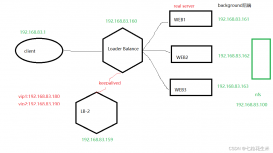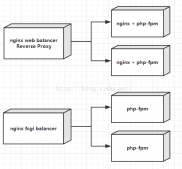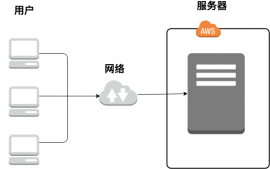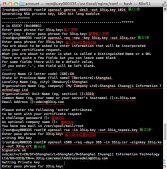问题
nginx取 $remote_addr 当做真实ip,而事实上,$http_X_Forwarded_For 才是用户真实ip,$remote_addr只是代理上一层的地址
解决方案:
在 http 模块 加
|
1
2
3
|
set_real_ip_from 172.17.10.125; #上一层代理IP地址real_ip_header X-Forwarded-For;real_ip_recursive on; |
添加之后启动nginx报错:
|
1
|
nginx: [emerg] unknown directive "set_real_ip_from" in /home/lnidmp/nginx/conf/nginx.conf:26 |
需要添加realip模块,重新编译nginx
1、cd /usr/local/nginx-1.15.12
2、./configure --prefix=/usr/cmcc/nginx --with-http_stub_status_module --with-http_ssl_module --with-http_realip_module
3、make && make install
温馨提示:
1、set_real_ip_from 是指接受从哪个信任前代理处获得真实用户ip
2、real_ip_header 是指从接收到报文的哪个http首部去获取前代理传送的用户ip
3、real_ip_recursive 是否递归地排除直至得到用户ip(默认为off)
首先,real_ip_header 指定一个http首部名称,默认是X-Real-Ip,假设用默认值的话,nginx在接收到报文后,会查看http首部X-Real-Ip。
(1)如果有1个IP,它会去核对,发送方的ip是否在set_real_ip_from指定的信任ip列表中。如果是被信任的,它会去认为这个X-Real-Ip中的IP值是前代理告诉自己的,用户的真实IP值,于是,它会将该值赋值给自身的$remote_addr变量;如果不被信任,那么将不作处理,那么$remote_addr还是发送方的ip地址。
(2)如果X-Real-Ip有多个IP值,比如前一方代理是这么设置的:proxy_set_header X-Real-Ip $proxy_add_x_forwarded_for;
得到的是一串IP,那么此时real_ip_recursive 的值就至关重要了。nginx将会从ip列表的右到左,去比较set_real_ip_from 的信任列表中的ip。
如果real_ip_recursive为off,那么,当最右边一个IP,发现是信任IP,即认为下一个IP(右边第二个)就是用户的真正IP;
如果real_ip_recursive为on,那么将从右到左依次比较,知道找到一个不是信任IP为止。
然后同样把IP值复制给$remote_addr。
生产nginx配置文件如下:
|
1
2
3
4
5
6
7
8
9
10
11
12
13
14
15
16
17
18
19
20
21
22
23
24
25
26
27
28
29
30
31
32
33
34
35
36
37
38
39
40
41
42
43
44
45
46
47
48
49
50
51
52
53
54
55
56
57
58
59
|
user www;worker_processes 10;worker_rlimit_nofile 51200;#error_log logs/error.log;#error_log logs/error.log notice;#error_log logs/error.log info;error_log /data/logs/nginx_error.log crit;#pid logs/nginx.pid;events { use epoll; worker_connections 51200;}http { include mime.types; default_type application/octet-stream; #log_format main '$remote_addr - $remote_user [$time_local] "$request" ' # '$status $body_bytes_sent "$http_referer" ' # '"$http_user_agent" "$http_x_forwarded_for"'; #access_log logs/access.log main; server_names_hash_bucket_size 128; server_tokens off; expires 1h; sendfile off; tcp_nopush on; fastcgi_connect_timeout 1200s; fastcgi_send_timeout 1200s; fastcgi_read_timeout 1200s; fastcgi_buffer_size 128k; fastcgi_buffers 8 128k;#8 128 fastcgi_busy_buffers_size 256k; fastcgi_temp_file_write_size 256k; keepalive_timeout 65; tcp_nodelay on; error_page 404 /; gzip on; gzip_min_length 2048; gzip_buffers 4 16k; gzip_http_version 1.1; gzip_types text/plain css html application/xml application/x-javascript ; set_real_ip_from 上一层代理IP地址; real_ip_recursive on; real_ip_header X-Forwarded-For; log_format access '$remote_addr - $remote_user [$time_local] "$request" ' '$status $body_bytes_sent "$http_referer" ' '"$http_user_agent" $http_x_forwarded_for';#################### include ################################################include conf.d/*.conf;} |
以上就是本文的全部内容,希望对大家的学习有所帮助,也希望大家多多支持服务器之家。
原文链接:https://www.cnblogs.com/chenjw-note/p/10785181.html
















